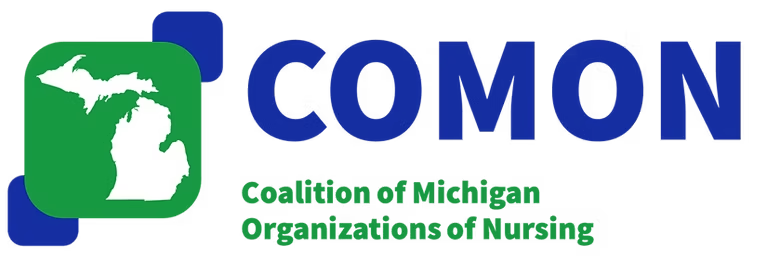Nursing school is rewarding — and expensive. Luckily, there are many targeted scholarships for nursing students that can cover tuition, fees, supplies, and even living expenses. Below I’ve gathered the top, trustworthy programs (federal, corporate, foundation, and association-based), with who’s eligible, how to apply, where to apply, typical award sizes, and current deadlines where available. Each item includes practical tips so you can submit a competitive application.
Note: scholarship cycles and deadlines change yearly. I’ve cited official sources for the most load-bearing details (deadlines, award sizes, and application portals) so you can click through and confirm the current cycle before applying.
1) Nurse Corps Scholarship Program (HRSA)
What it is: A federal scholarship that pays tuition/fees, provides a monthly stipend, and covers other reasonable costs in exchange for service at an eligible health care facility in a Health Professional Shortage Area (HPSA).
Eligibility (typical):
- U.S. citizen or permanent resident.
- Enrolled (or accepted) in an accredited RN, BSN, MSN, or graduate nursing program.
- Must agree to work at an approved site in a HPSA for a set period after graduation.
Award size: Covers tuition and fees, plus a monthly living stipend (amounts vary by year/award).
Deadline / Cycle: Application windows are annual. The 2025 cycle closed (deadline April 24, 2025); HRSA announces next cycle and guidance on the HRSA site. Always check the official portal for exact dates.
How & where to apply: Apply via the HRSA Nurse Corps Scholarship pages — prepare transcripts, proof of enrollment, personal statement, and references. Contact HRSA’s program office for technical questions.
Why apply: This is one of the most generous scholarships for nursing students — it can eliminate tuition debt in exchange for service at high-need locations.
2) TYLENOL® Future Care Scholarship
What it is: Annual corporate scholarship for students pursuing healthcare careers (including nursing). TYLENOL awards several $10,000 and $5,000 scholarships to high-achieving students.
Eligibility (typical):
- U.S. resident (50 states + territories).
- Enrolled or accepted to a healthcare degree program.
- Strong academic record, leadership, community service, and essay responses are usually required.
Award size: Historically, winners receive $10,000 (top awards) and $5,000 (additional winners)
Deadline / Cycle: The TYLENOL scholarship opens annually (example: the 2025 application window closed August 1, 2025). Check the official TYLENOL scholarship page for the current year’s opening and closing dates.
How & where to apply: Apply through the official TYLENOL scholarship portal (link on the TYLENOL site). Prepare essays, resume, transcripts, and letters of recommendation.
Why apply: High award amounts and strong brand credibility — great for both undergraduate and graduate nursing students.
3) Foundation of the National Student Nurses’ Association (FNSNA) Scholarships
What it is: FNSNA offers a large portfolio of scholarships for nursing students across specialties and stages (undergrad, entry-level masters, RN-to-BSN, etc.). Awards are often targeted to leadership, specialty interest, or geographic grants.
Eligibility (typical):
- Membership in NSNA or meeting sponsor-specific rules.
- Enrollment in an accredited nursing program (varies by scholarship).
- Demonstrated academic merit, financial need, leadership, or service.
Award size: Varies widely (from several hundred to several thousand dollars; some awards provide up to $10,000 depending on the sponsor).
Deadline / Cycle: Varies by specific scholarship — FNSNA’s undergraduate scholarship cycles typically open in the fall and close in winter (example: previous cycles closed in January). Check FNSNA scholarship pages for current deadlines.
How & where to apply: Use the FNSNA scholarship portal; you’ll usually create an account, complete a standardized application, and attach transcripts and references.
Why apply: Wide range of awards tailored to students — good odds if you match specific sponsor criteria.
4) AACN & AACN Foundation Scholarships
What it is: The American Association of Colleges of Nursing and its foundation administer scholarships (e.g., NurseThink®, Pathways to Critical Care) targeted at BSN, MSN, and doctoral students — often with an emphasis on future faculty, critical care, and workforce development.
Eligibility (typical):
- Enrollment at AACN-member institutions (varies by award).
- Interest in specific career tracks (e.g., nurse faculty, critical care).
- Strong academic standing and commitment to nursing education or specialization.
Award size: Typically several thousand dollars (example: NurseThink® awards $5,000 periodically).
Deadline / Cycle: Varies—some awards have January or September deadlines (see AACN scholarship pages for current cycles).
How & where to apply: Apply through the AACN Foundation scholarship portal; follow sponsor-specific instructions and provide transcripts, personal statements, and proof of enrollment at an AACN-member school.
Why apply: Excellent for students planning to pursue graduate study or nursing academia — these scholarships also bolster leadership credentials.
5) Johnson & Johnson Nursing Scholarships / Grants & Nurse Innovation Programs
What it is: Johnson & Johnson funds multiple nursing scholarships, grants, and innovation fellowships (including support for nursing students and nurse leaders). J&J frequently partners with universities and associations to award scholarships and fellowships.
Eligibility (typical):
- Depends on the specific program (some target employees’ families, others target graduate leadership or innovation).
- Varies by award level and sponsor partner.
Award size: Varies widely — from scholarships for students to fellowship sponsorships covering program costs and travel.
Deadline / Cycle: Varies by specific scholarship or fellowship. J&J posts opportunities and application windows on their nursing portal and partner sites.
How & where to apply: Visit Johnson & Johnson’s nursing scholarships and grants page or partner university pages. For innovation fellowships, applications go to the hosting university (e.g., Penn Nursing for the Nurse Innovation Fellowship).
Why apply: J&J funding is strong for innovation, leadership, and education — plus it often links winners to professional development and networking opportunities.
Other sources worth searching
- DAISY Foundation grants and student awards (small grants, conference support, recognition awards).
- University-specific scholarships (many schools create endowed nursing scholarships — check your nursing school’s financial aid page).
- State nursing associations and hospital systems (local scholarships with fewer applicants).
- Private foundations and professional societies (ONCB, specialty organizations like oncology or pediatric nursing).
Tips to Win Scholarships for Nursing Students (practical & actionable)
- Match closely to the eligibility criteria. Read sponsor requirements line-by-line — many applicants are rejected for failing to meet a single criterion.
- Polish your essays — show outcomes. Use the STAR method (Situation–Task–Action–Result) to describe clinical experiences and patient impact. Concrete examples beat vague idealism.
- Gather strong recommendations. Ask clinical instructors, faculty, or supervisors who can speak to your clinical skill, teamwork, and professionalism. Provide them with a short summary to help them write specific examples.
- Proof everything. Spelling or formatting errors look sloppy. Have someone else read your application and essay.
- Apply early and widely. Don’t rely on one big scholarship — combine local, national, corporate, and school-based opportunities to stack funding.
- Track deadlines in a spreadsheet. Include required documents, links, and contact info — then tick tasks off as you gather them.
- Use school resources. Financial aid offices and scholarship coordinators can suggest less-known awards and proofread your applications.
- Keep copies of clinical evaluations and awards. Sponsor reviewers love objective evidence (Dean’s list, certifications, patient safety projects).
Final Checklist — What to submit for most scholarship apps
Current transcript (official or unofficial as requested)
Resume/CV highlighting clinical and volunteer activity
Personal statement/essay tailored to the scholarship prompt
Letters of recommendation (usually 1–3)
Proof of enrollment or acceptance in an accredited nursing program
Any license/certification copies (e.g., CNA) if requested
Where to start right now?
- Bookmark and monitor these official pages: HRSA Nurse Corps, TYLENOL Future Care, AACN Foundation, FNSNA, and Johnson & Johnson nursing pages.
- Make a spreadsheet of 10 scholarships you qualify for, with deadlines and documents needed.
- Draft one strong, adaptable personal statement you can tailor for each application.
FAQ
Q: How many scholarships should I apply for?
A: As many as you qualify for — each application takes effort, but even small awards add up.
Q: Do scholarships affect financial aid?
A: Often yes — outside scholarships may reduce need-based aid, but loan reductions or excess funds are typically returned to the student to use for school-related costs. Always check with your school’s financial aid office.
Q: Are there scholarships for LPN→RN or RN→BSN students?
A: Yes — many programs target returning students and career changers (FNSNA, state nursing associations, and community foundations often have specific awards).

